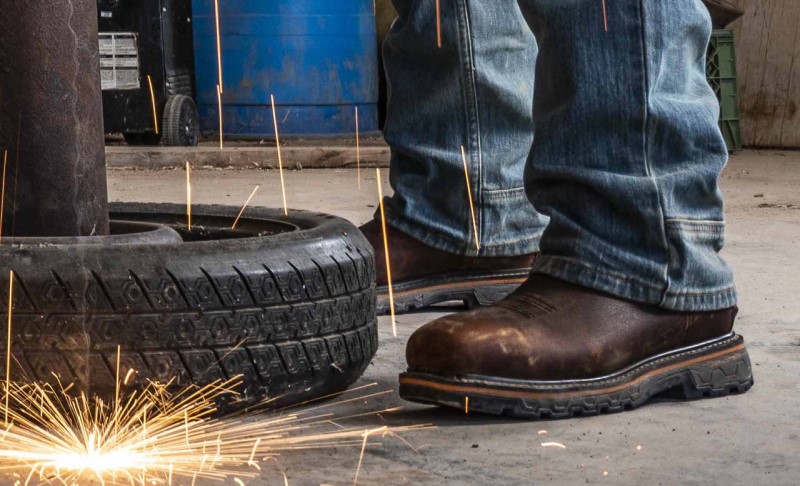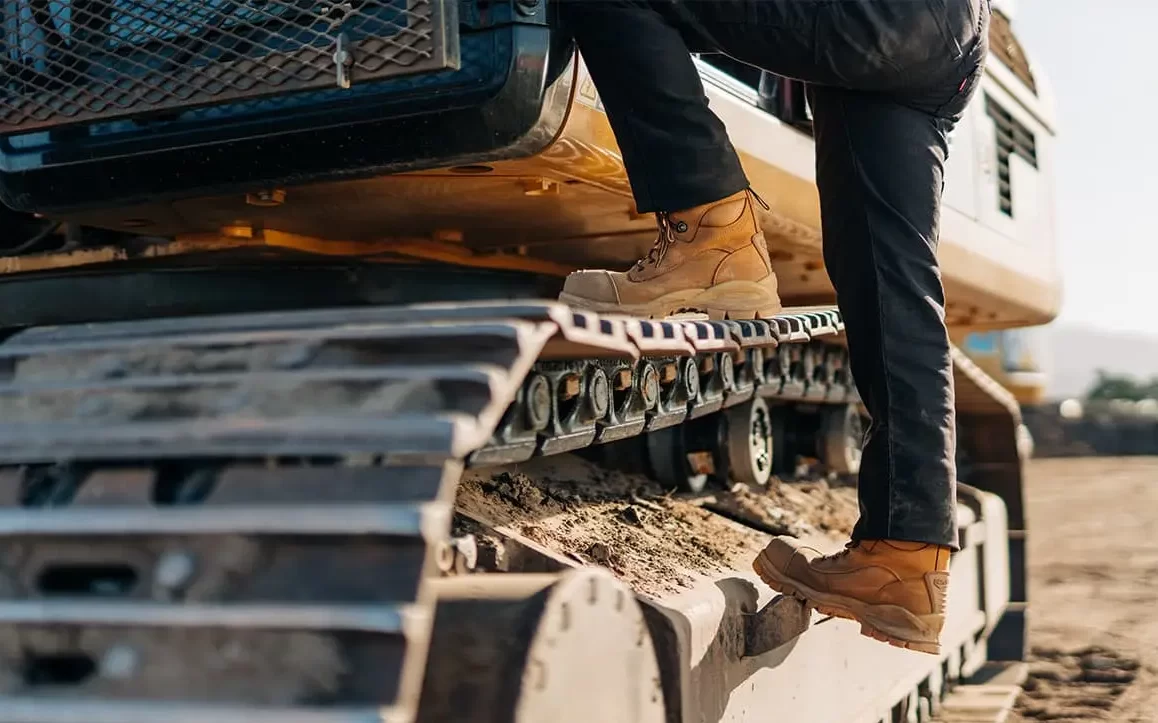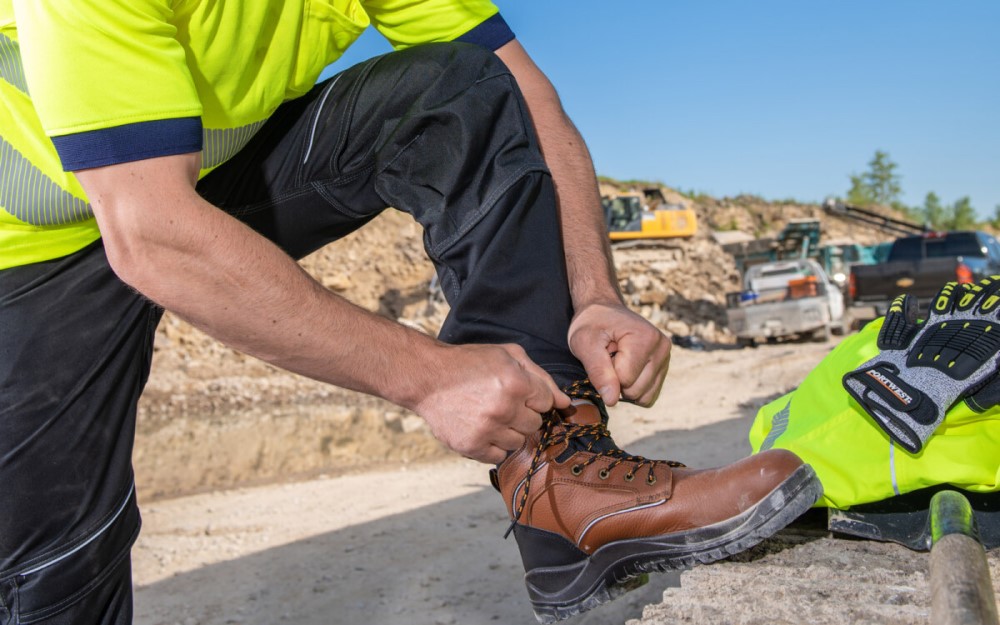To choose safety shoes for men to avoid serious injuries, as well as to be confident during work, you first need to check the quality to see if it is a good product or not. To do so, you need to consider many things from safety standards, and comfort to the features that safety shoes bring. Furthermore, you need to try on shoes before you buy to make sure you feel satisfied. Find out with guardboots below!
How to choose safety shoes for men?
It is quite inconvenient to pay a lot of money for shoes only to find that they are torn, frayed, and ruined after a month or a few weeks, and the soles are broken. Bad protective footwear is much more hazardous when it is kicked in caustic chemicals, on slippery floors, in hot conditions, etc. These are areas where employee safety is significantly impacted. As a result, the following parameters should be taken into consideration when selecting safety shoes.
Technical standards
There are several technical standards that safety shoes for men must meet in order to ensure they provide adequate protection for the wearer. Some of these standards include:
ASTM F2413-18: This is the American Society for Testing and Materials standard for safety footwear. It includes requirements for impact resistance, compression resistance, and penetration resistance of the toe area, as well as requirements for the electrical hazard protection and slip resistance of the outsole.
EN ISO 20345:2011: This is the European standard for safety footwear. It includes requirements for the same types of protection as the ASTM standard, as well as additional requirements for antistatic properties and energy absorption in the heel.
OSHA: The Occupational Safety and Health Administration in the United States has regulations that require employers to provide safety footwear to employees who are at risk of foot injuries due to falling or rolling objects, or electrical hazards. The footwear must meet the ASTM or ANSI standards, or any other standard that provides equal or greater protection.
CSA Z195-09: This is the Canadian standard for safety footwear. It includes requirements for impact resistance, penetration resistance, and electric shock resistance of the toe area, as well as requirements for slip resistance, heat resistance, and cold-weather insulation.

Comfort level
Comfort is an important factor to consider when selecting safety shoes for men, as the shoes will be worn for extended periods of time and must provide support and cushioning to help prevent fatigue and discomfort.
All safety shoes feature a highly sturdy steel toe as part of its fundamental construction. This steel cap’s purpose is to safeguard the toe. However, there are numerous shoe styles with heavy, thick steel caps that increase the likelihood of foot pain and decrease productivity. Long-term use of these shoes will compromise workers’ safety and health.
There are a number of ways that safety shoes can be designed for comfort. Extra padding in the insole, collar, and tongue of the shoe can help provide cushioning and support for the foot and ankle. Breathable upper materials like mesh or leather can help keep feet cool and dry, reducing sweating and discomfort.
Furthermore, a shoe with a flexible sole can help provide a more natural range of motion, reducing stress on the foot and ankle. Lighter shoes are less tiring to wear and easier on the legs and feet. A shoe with a wider fit or a roomier toe box can provide added comfort for people with wide or high-volume feet.
Functions
To maintain worker safety while working, select a line of shoes with the suitable features based on the working environment. Choose shoes with strong impact resistance if you work in a number of places where there are a lot of impacts, such factories and construction sites. To meet job requirements and boost labor efficiency in environments that are frequently exposed to solvents and water, wear footwear with water- and moisture-resistant features.
Safety shoes for men are designed to protect the feet from hazards that may be present in certain work environments. Here are a few examples of functions that safety shoes for men may perform:
- Toe protection: Safety shoes are often designed with steel or composite toes that can protect the feet from falling objects or heavy equipment.
- Slip-resistant: Safety shoes can be designed with slip-resistant soles to provide better traction and stability on wet, oily or slippery surfaces.
- Electric shock protection: Safety shoes can be designed to provide insulation against electrical hazards, to protect the worker from electrical shock.
- Puncture-resistant: Safety shoes can have a puncture-resistant sole to protect the feet from sharp objects that may be present in the work environment, like nails, screws and other debris.
- Waterproof: Some safety shoes are designed to be waterproof, which helps to keep feet dry and comfortable in wet work environments.
- Heat and chemical resistance: safety shoes that can resist chemical and heat, this can help to protect the worker from hazards that may be present in work environments where chemicals, heat or fire hazards exist.
- High-visibility: Some safety shoes are designed with reflective material or bright colors for better visibility in low-light conditions, this can help to increase worker’s visibility and reduce the risk of accidents.
These are just a few examples of the many features that safety shoes for men can have. It is important to identify the specific hazards present in a work environment and choose safety shoes that can provide protection against those hazards.
Try on safety shoes
It is also important to test and try the shoes before purchasing, and to check if the shoes meet the work requirements, so that the shoes have the right characteristics to ensure good standing and walking conditions and to avoid pain, discomfort and injury.
Try on both shoes, and walk around in them to test for fit and comfort. Make sure there’s enough room to wiggle toes and that the heel doesn’t slip when walking. Make sure that the shoes fit well and are not too tight or too loose.
Test the shoes’ safety features, such as the steel or composite toe, puncture-resistant sole, or slip-resistant outsole. Make sure they meet the safety requirements for the work environment. Try to put the shoes in the position that you’ll be wearing them on the job, with the right posture and movement.
If buying online, get familiar with the brand’s sizing chart, and check the return policy in case the shoes don’t fit well.
It is important to ensure that the shoes fit well and provide the necessary level of protection for the specific work environment, to ensure that the worker is safe and comfortable on the job.

Final Thoughts
When choosing safety shoes for men, it is important to consider factors such as the intended use, level of protection required, and fit. OSHA (Occupational Safety and Health Administration) recommends that employers provide personal protective equipment (PPE) to employees, and that this equipment, including safety shoes, fit properly and be maintained in a sanitary and reliable condition.

